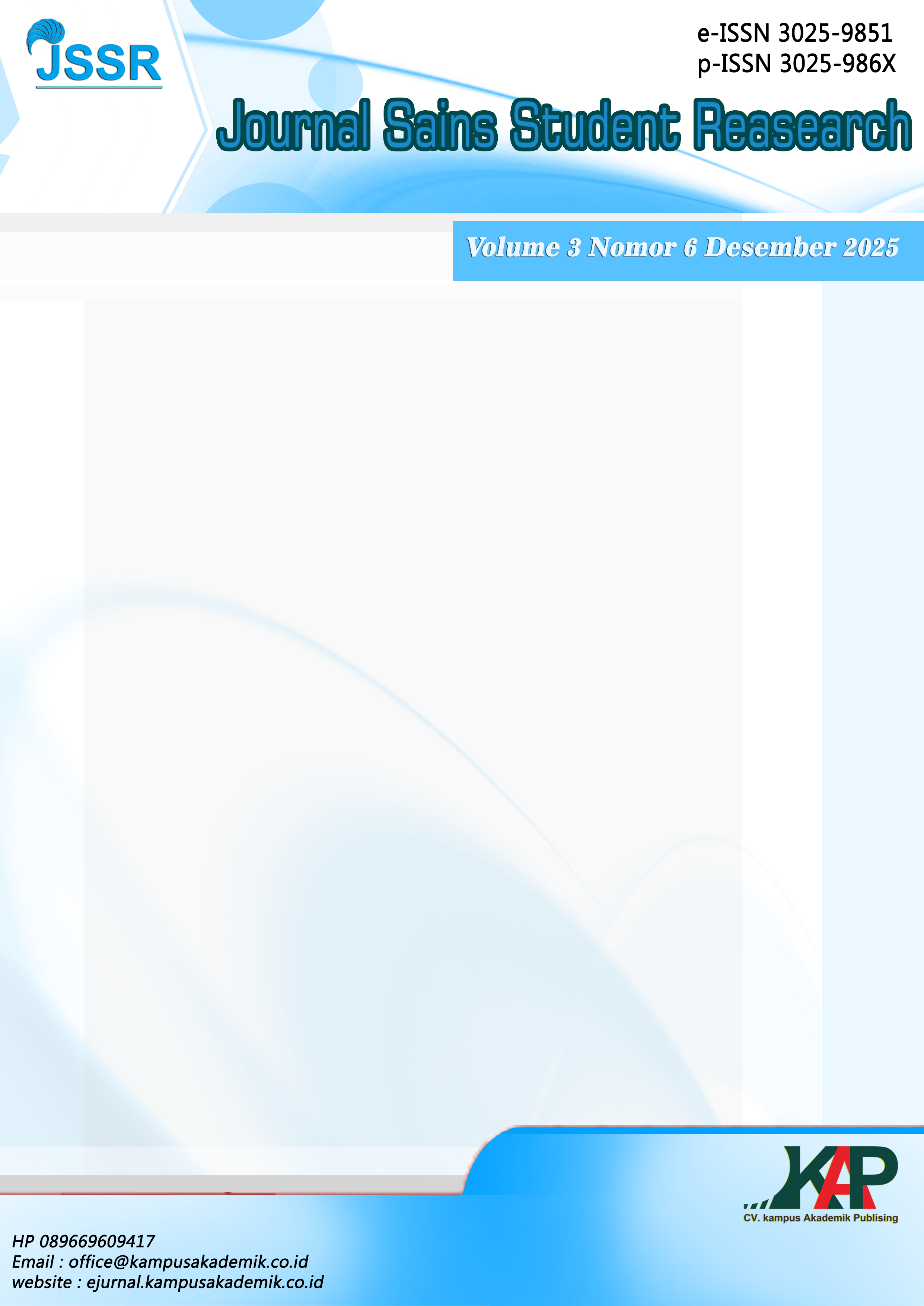KLASIFIKASI TINGKAT KEPARAHAN KECELAKAAN KERJA MENGGUNAKAN ALGORITMA RANDOM FOREST
DOI:
https://doi.org/10.61722/jssr.v3i6.6433Keywords:
Random Forest, SMOTE, classification, workplace accidents, OSHA ITA.Abstract
This study aims to develop a classification model for the severity of workplace accidents using the Random Forest algorithm with OSHA–ITA data from January 2015 to September 2024. From 95,194 initial incident data, cleaning, missing value handling, removal of irrelevant variables, encoding, and the formation of Severity targets (Severe, Moderate, Mild) were carried out. The dataset was divided into 70% training data and 30% testing data with a total of 28,559 samples. The results showed that the initial model was biased towards the majority class, while the minority class was difficult to recognize. After applying SMOTE, the model's performance improved with more balanced predictions. The most influential features included Nature Title, Part of Body Title, Event Title, Source Title, Hospitalized, and Amputation. These findings emphasize the importance of selecting relevant features and data balancing techniques to improve the performance of Random Forest classification in occupational accidents.
References
S. Chauhan and S. Sachdeva, “A machine learning approach for classification of occupational injury severity,” Procedia Computer Science, vol. 167, pp. 2191–2200, 2020. [Online]. Available: https://doi.org/10.1016/j.procs.2020.03.270
G. López and M. Paz, “Analysis and prediction of workplace accidents using machine learning: A Random Forest approach,” Safety Science, vol. 110, pp. 57–65, 2018. [Online].Available:https://doi.org/10.1016/j.ssci.2018.07.002
Y. H. Huang et al., “Developing a classification model for construction accident severity using data mining techniques,” Journal of Safety Research, vol. 62, pp. 203–210, 2017. [Online]. Available: https://doi.org/10.1016/j.jsr.2017.06.007
E. Petridou et al., “Machine learning techniques for classification of work-related accidents: An empirical study in the construction sector,” Automation in Construction, vol. 98, pp. 321–330, 2019. [Online]. Available: https://doi.org/10.1016/j.autcon.2018.11.018
Y. Kim and S. Park, “Predicting industrial accident severity with Random Forest and imbalanced data techniques,” Expert Systems with Applications, vol. 158, p. 113584, 2020. [Online].Available:https://doi.org/10.1016/j.eswa.2020.113584
Y. Guo, T. W. Yiu, and V. A. González, “Predicting accident severity in the construction industry using artificial neural networks,” Automation in Construction, vol. 84, pp. 1–9, 2017.[Online].Available:https://doi.org/10.1016/j.autcon.2017.08.009
A. J. P. Tixier et al., “Application of machine learning to construction injury prediction,” Automation in Construction, vol. 69, pp. 102–114, 2016. [Online]. Available: https://doi.org/10.1016/j.autcon.2016.05.016
A. Dutta dan A. P. S. Rathore, “Estimating Ergonomic Compatibility of Cars: A Fuzzy Approach,” Procedia Computer Science, vol. 167, hlm. 506–515, 2020, https://doi: 10.1016/j.procs.2020.03.270.
M. Marzouk dan M. Enaba, “Text analytics to analyze and monitor construction project contract and correspondence,” Automation in Construction, vol. 98, hlm. 265–274, Feb 2019, https://doi: 10.1016/j.autcon.2018.11.018.
Y.-F. Huang dan P.-H. Chen, “Fake news detection using an ensemble learning model based on Self-Adaptive Harmony Search algorithms,” Expert Systems with Applications, vol. 159, hlm. 113584, Nov 2020. https://doi: 10.1016/j.eswa.2020.113584.
W. Zhou, "Traffic Accident Severity Prediction Based on Data Cleaning and Machine Learning," IEEE Access, vol. 12, 2024. [Online].Available:https://doi.org/10.1109/ACCESS.2024.3333345
A. Khairuddin et al., “Occupational Injury Risk Mitigation: Machine Learning Approach and Feature Optimization,” International Journal of Occupational Safety and Ergonomics, vol. 28, no. 3, pp. 321–335, 2022. [Online]. Available: https://doi.org/10.1080/10803548.2022.2057755
A. Adefabi, O. Ayodeji, and M. A. Abdulraheem, “Predicting Accident Severity Using Random Forest Model,” Safety Science, vol. 163, 2023. [Online]. Available: https://doi.org/10.1016/j.ssci.2023.106038
K. Koç, Ö. Ekmekcioğlu, and A. P. Gurgun, “Prediction of Construction Accident Outcomes Based on an Imbalanced Dataset,” Journal of Construction Engineering and Management, vol. 149, no. 2, 2023. [Online]. Available: https://doi.org/10.1061/jcem.0002344
Zermane, A., M. Z. M. Tohir, H. Zermane, M. R. Baharudin, and H. M. Yusoff, “Predicting Fatal Fall from Heights Accidents Using Random Forest Classification,” Journal of Occupational Health, vol. 64, no. 3, 2022. [Online]. Available: https://doi.org/10.1002/1348-9585.12367
Downloads
Published
Issue
Section
License
Copyright (c) 2025 JOURNAL SAINS STUDENT RESEARCH

This work is licensed under a Creative Commons Attribution-ShareAlike 4.0 International License.













